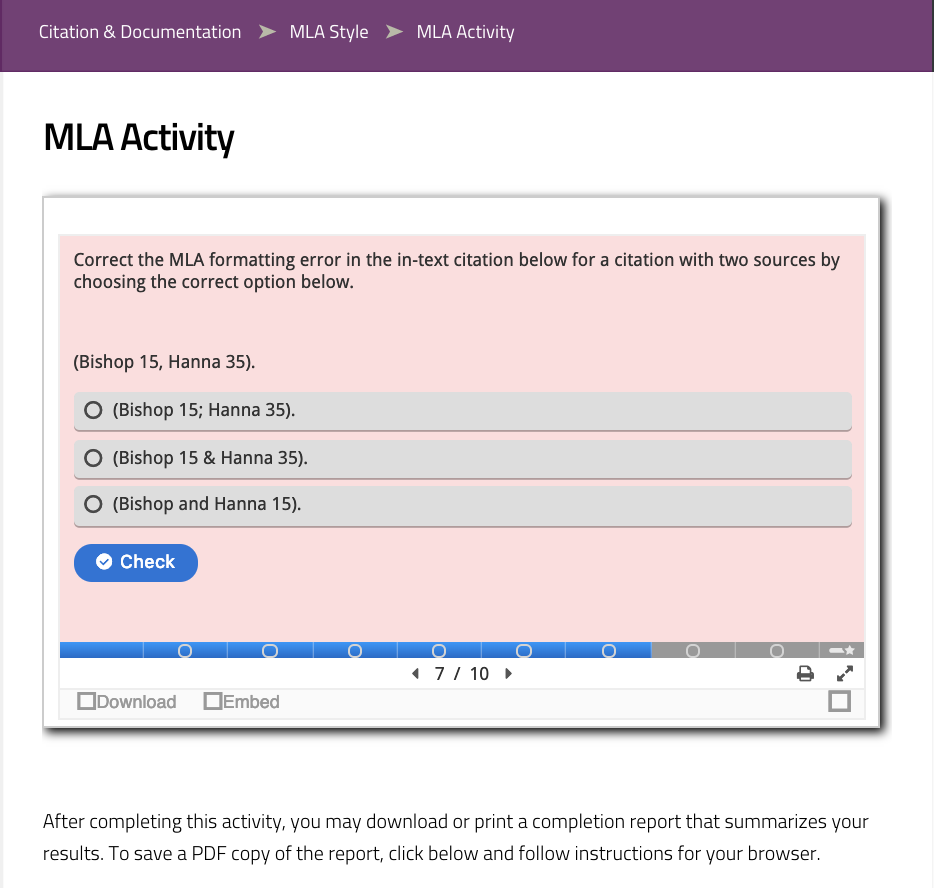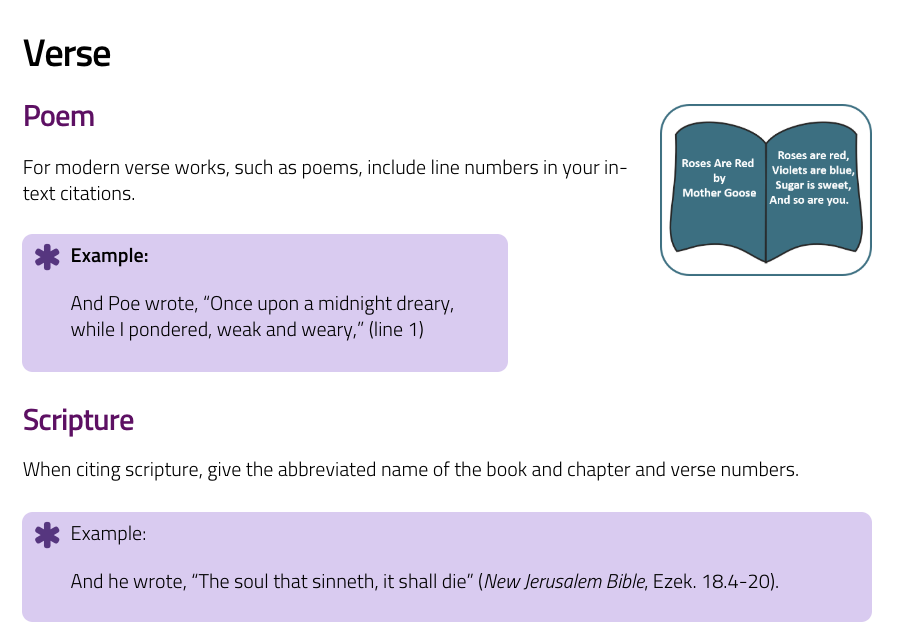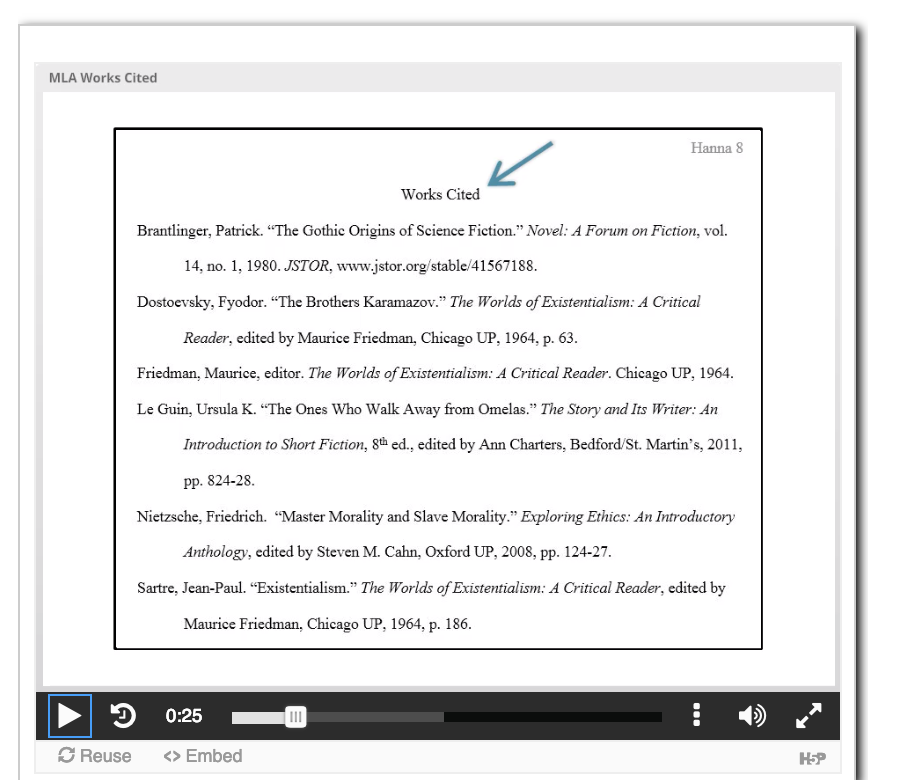Intern’s Corner: Referencing and Citing Sources Part V: MLA Style
This is the fifth and final installment of the reference and citing sources series. In this series, I provide tips for using the OWL to help you locate the necessary information for citing your sources. The previous blog posts were Referencing and Citing Sources Part I: Printed Books, Part II: Database and Website, Part III: Web Pages, and Part IV: APA Style. This week I will focus on MLA style.
MLA style tutorials on OWL
The OWL has a plethora of information regarding how to properly cite and reference sources as well as various tutorials such as MLA Style, MLA Formatting Guide, MLA In-Text Citations, and MLA Works Cited.
MLA Style
MLA stands for the Modern Language Association and is a style used by humanities courses, such as language and literature. The OWL provides a quick overview and link to the latest MLA Style handbook published in 2016.
MLA Formatting Guide
The OWL provides a checklist for students who have either finished their MLA style paper or need a refresher as to how to format their paper in the MLA Formatting Guide. The module provides helpful tips on 21 slides providing visual examples of topics such as spacing of headers, how many spaces after a period (one – unless your instructor says otherwise), typeface, citing poetry, tables, etc. This module is followed up by an MLA Activity, which contains 10 slides to help you to check your comprehension by seeing correct and incorrect formatting of an MLA paper. You can also save your quiz and submit it to an instructor if they ask for it.
(Screenshot of MLA Activity quiz question regarding in-text citation with two sources)

MLA In-Text Citations

The OWL covers in-text citation (a.k.a. parenthetical citations) and formatting necessary to produce a well-written paper in MLA style. It offers examples for citing indirect sources, two authors, and three or more authors.
MLA Works Cited
As of 2016, MLA implemented a simplified way of citing your work for your Works Cited page. This new streamlined approach utilizes what is known as a “container.” These containers differ regarding what source you are citing, and the OWL provides interpretations of what is needed for those works cited. Click on Print Books and E-Books to compare what is needed in the way of containers. The tutorial also offers citation help with formatting online course & discussion boards, interviews, government publications, and interviews in MLA Style.
(Screenshot of MLA container and MLA E-Book citation, and Online Courses & Discussion Board examples.)

MLA Style Demo
Under MLA Style: MLA Style Demo, the OWL provides three videos on the best practices when generating an MLA paper. The first video provides an example of an MLA style paper and how to format it properly. The second video is how to incorporate in-text citations within your body of work and how to avoid plagiarism. The third video is how to properly format a Works Cited page and describes more on how containers are used.

Final thoughts
As this series of blog posts have shown you, the OWL provides helpful information for students in the way of citing references properly and preparing a correctly formatted paper. For further information on locating reference information and avoiding plagiarism when documenting, visit the OWL and see the tutorials offered.
This is the final installment in this series. I hope you found it helpful when referencing and citing your sources in the various formats. Check the OWL regularly to ensure you know the latest on citing resources in your particular required style. Best of luck!
Ginger Hamblin is an intern for the Excelsior University Online Writing Lab. She has been a student of Excelsior University for almost two years and is pursuing her Bachelor of Science – Liberal Arts in Professional and Technical Writing. She is a writing enthusiast, painter, wife, and mother of three boys.
